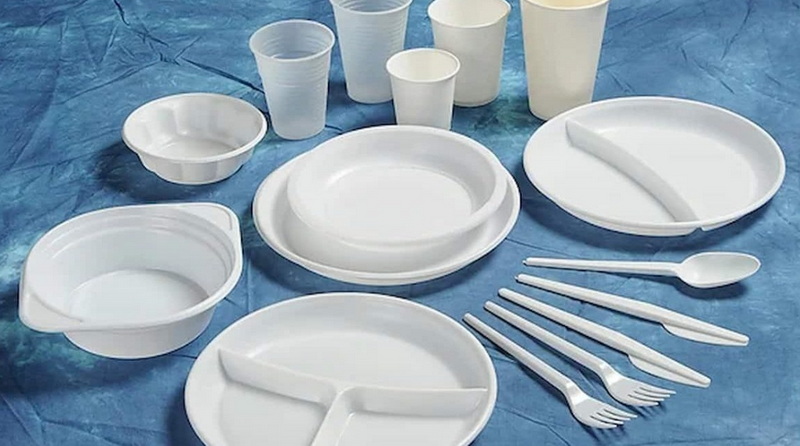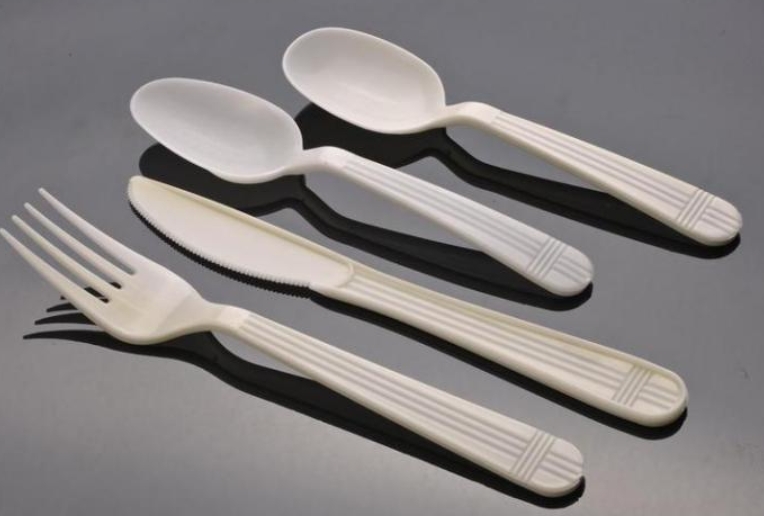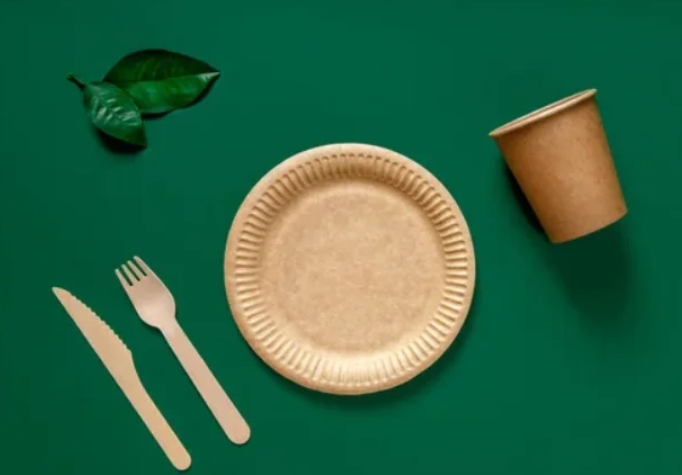
Content Menu
● Introduction to Disposable Tableware
>> Types of Disposable Tableware
● Production Process of Disposable Tableware
>> Paper Tableware Production
>> Plastic Tableware Production
>> Bioplastic Tableware Production
>> Plant Fiber Tableware Production
● Environmental Considerations
>> Eco-Friendly Practices
>> Impact of Consumer Choices
>> Future Trends in Disposable Tableware
● Challenges and Opportunities
>> Innovation in Materials
>> Collaboration and Regulation
● Conclusion
● FAQs
>> 1. What Materials Are Used for Disposable Tableware?
>> 2. How Do Manufacturers Ensure Sustainability in Disposable Tableware Production?
>> 3. What Are the Environmental Benefits of Biodegradable Tableware?
>> 4. Can Disposable Tableware Be Recycled?
>> 5. How Long Does Biodegradable Tableware Take to Decompose?
● Citations:
Disposable tableware has become an indispensable part of modern life, offering convenience and ease of use in various settings, from casual gatherings to large-scale events. The production of disposable tableware involves a range of materials and manufacturing processes, each designed to meet specific needs such as sustainability, durability, and cost-effectiveness. This article will delve into the production processes of different types of disposable tableware, highlighting the materials used, manufacturing steps, and environmental considerations.

Introduction to Disposable Tableware
Disposable tableware encompasses a wide array of products, including plates, cups, bowls, and utensils, made from materials like paper, plastic, bioplastics, and plant fibers. The choice of material often depends on the intended use, environmental impact, and consumer preferences.
Types of Disposable Tableware
1. Paper Tableware: Made from paper pulp, these products are eco-friendly and biodegradable. They are often used for serving hot and cold foods. Paper tableware is a popular choice for outdoor events due to its lightweight nature and ease of disposal.
2. Plastic Tableware: Commonly made from polypropylene or polyethylene, plastic tableware is durable but has significant environmental drawbacks due to its non-biodegradable nature. Despite these concerns, plastic remains widely used due to its affordability and versatility.
3. Bioplastic Tableware: Derived from renewable biomass sources such as cornstarch or sugarcane, bioplastics offer a more sustainable alternative to traditional plastics. Bioplastic tableware is biodegradable and compostable, reducing the environmental impact associated with plastic waste.
4. Plant Fiber Tableware: This includes products made from sugarcane bagasse, bamboo, or palm leaves, which are biodegradable and compostable. Plant fiber tableware is gaining popularity due to its eco-friendly nature and aesthetic appeal.
Production Process of Disposable Tableware
The manufacturing process varies depending on the material used. Here, we'll explore the production processes for paper, plastic, bioplastic, and plant fiber tableware.
Paper Tableware Production
1. Raw Material Preparation: Paper pulp is obtained from wood, bamboo, or recycled paper. The pulp is processed to remove impurities and improve its strength.
2. Pulping and Mixing: The pulp is mixed with water and additives to enhance strength and water resistance. Additives may include chemicals to improve durability or natural substances like starch to enhance water resistance.
3. Forming: The pulp mixture is formed into the desired shape using molds. For plates, this involves creating a flat, even surface, while cups require a more complex shape.
4. Drying: Excess moisture is removed through drying ovens or air drying. This step is crucial to prevent mold growth and ensure the product's stability.
5. Cutting and Shaping: The dried products are cut and shaped to their final form. This may involve additional processes like creasing or folding for cups and bowls.
Plastic Tableware Production
1. Raw Material: Polypropylene or polyethylene pellets are used. These pellets are melted and formed into the desired shape.
2. Injection Molding: Molten plastic is injected into molds to form the desired shape. This process allows for precise control over the product's dimensions and design.
3. Cooling and Ejection: The molded products are cooled and ejected from the mold. The cooling process helps prevent deformation and ensures the product retains its shape.
Bioplastic Tableware Production
1. Raw Material: Biomass sources like cornstarch or sugarcane are converted into polylactic acid (PLA). This process involves fermentation and polymerization to create a biodegradable plastic.
2. Pelletizing: PLA is formed into pellets, which are easier to handle and transport during manufacturing.
3. Injection Molding: Similar to plastic, bioplastic pellets are molded into the desired shape using injection molding machines. This process allows for the creation of complex shapes with high precision.
Plant Fiber Tableware Production
1. Raw Material: Sugarcane bagasse, bamboo, or palm leaves are used. These materials are abundant and renewable, making them ideal for sustainable production.
2. Pulping and Mixing: Similar to paper production, but with plant fibers. The pulp is mixed with water and natural additives to enhance strength and durability.
3. Molding: The pulp is molded into the desired shape using heat and pressure. This process helps bind the fibers together, creating a sturdy product.
4. Drying: Products are dried to remove excess moisture. This step is crucial to prevent mold growth and ensure the product's stability.

Environmental Considerations
Disposable tableware manufacturers are increasingly focusing on sustainability due to environmental concerns. Biodegradable and compostable options are gaining popularity as they reduce waste and pollution.
Eco-Friendly Practices
- Zero-Waste Manufacturing: Some companies ensure that their manufacturing process generates no waste, using agricultural waste as raw materials. This approach not only reduces waste but also supports sustainable agriculture.
- Chemical-Free Production: No chemicals are used in the production of eco-friendly tableware, making it safe for animals and the environment. This practice also reduces the risk of chemical contamination in soil and water.
- Composting: Biodegradable tableware can be composted, reducing landfill waste and providing nutrient-rich soil. This process supports sustainable gardening and agriculture by closing the nutrient cycle.
Impact of Consumer Choices
Consumer preferences play a significant role in driving the demand for sustainable disposable tableware. As consumers become more environmentally conscious, manufacturers are responding by investing in eco-friendly materials and production processes. This shift not only benefits the environment but also enhances brand reputation and customer loyalty.
Future Trends in Disposable Tableware
The future of disposable tableware is likely to be shaped by technological advancements and environmental regulations. Innovations in bioplastics and plant fibers are expected to improve product durability and sustainability. Additionally, governments may implement stricter regulations on plastic use, further driving the adoption of biodegradable alternatives.
Challenges and Opportunities
Despite the growing demand for sustainable disposable tableware, manufacturers face several challenges. These include higher production costs for biodegradable materials, limited availability of raw materials in some regions, and the need for consumer education on proper disposal practices. However, these challenges also present opportunities for innovation and growth in the industry.
Innovation in Materials
Researchers are continually exploring new materials and technologies to improve the sustainability and performance of disposable tableware. For example, advancements in bioplastics have led to products with improved durability and heat resistance, making them more versatile for various applications.
Collaboration and Regulation
Collaboration between manufacturers, governments, and consumers is crucial for promoting sustainable practices. Governments can implement policies that encourage the use of biodegradable materials, while manufacturers can invest in research and development to improve product quality and affordability.
Conclusion
The production of disposable tableware involves a variety of materials and processes, each with its own advantages and environmental impacts. As consumers become more environmentally conscious, the demand for sustainable and biodegradable options is increasing. Manufacturers are responding by adopting eco-friendly practices and materials, ensuring that disposable tableware not only provides convenience but also contributes to a healthier planet.

FAQs
1. What Materials Are Used for Disposable Tableware?
Disposable tableware can be made from paper, plastic, bioplastics, sugarcane bagasse, bamboo, and palm leaves. Each material offers different benefits in terms of durability, sustainability, and cost.
2. How Do Manufacturers Ensure Sustainability in Disposable Tableware Production?
Manufacturers focus on using renewable resources, reducing waste, and adopting chemical-free production processes. Some also ensure that their products are biodegradable and compostable.
3. What Are the Environmental Benefits of Biodegradable Tableware?
Biodegradable tableware reduces landfill waste and pollution by decomposing naturally into organic matter. It also avoids the release of toxic chemicals during decomposition.
4. Can Disposable Tableware Be Recycled?
Most biodegradable tableware is not suitable for traditional recycling but should be composted. However, some materials like recycled paper can be used in the production of new tableware.
5. How Long Does Biodegradable Tableware Take to Decompose?
The decomposition time varies depending on the material and conditions. Generally, biodegradable tableware decomposes within a few months in composting environments.
Citations:
[1] https://patents.google.com/patent/CN1209484A/en
[2] https://qudrat.co.in/disposable-plates-manufacturing/
[3] https://eco-recycle-equip.com/pulp-molded-tableware-production-line/
[4] https://askpackagingltd.com/paper-plates-process/
[5] https://www.youtube.com/watch?v=RpYF_DbewwM
[6] https://insights.made-in-china.com/Understanding-Disposable-Tableware-Sourcing-Consumer-Needs-Selection-Guide_ATRGtmXbzElQ.html
[7] https://www.bioleaderpack.com/biodegradable-tableware-detailed-questions-and-answers/
[8] https://universalimpresora.com/how-are-paper-plates-and-cups-manufactured/
[9] https://worldpapermill.com/disposable-tableware-manufacturing/
[10] https://www.innaturepack.com/questions-biodegradable-disposable-tableware-molded-pulp/
[11] https://theconiferous.com/blog/disposable-tableware/
[12] https://www.easyngreen.com/eight-common-questions-about-ecofriendly-disposable-utensils.html
[13] https://www.ecoleafproducts.co.uk/pages/disposable-plates-questions
[14] https://foogogreen.com/faqs/
[15] https://www.youtube.com/watch?v=K3CnsUcb0Ew
[16] https://askpackagingltd.com/paper-plates-process/
[17] https://www.kviconline.gov.in/pmegp/pmegpweb/docs/commonprojectprofile/DisposablePlatesDona.pdf
[18] https://worldpapermill.com/disposable-plates-from-sugarcane-waste/
[19] https://www.niir.org/blog/wp-content/uploads/2021/05/Start-a-Business-Production-of-Disposable-Plates-and-Cups-from-Waste-Rice-Husk-Powder..pdf
[20] https://okcredit.in/blog/how-to-start-disposable-products-business/
[21] https://www.techno-preneur.net/technology/project-profiles/other/paper.html
[22] https://www.parason.com/blog/disposable-tableware-production-line
[23] https://diyecobox.com/how-are-paper-plates-made-a-simple-guide/
[24] https://www.pandopapercup.com/news/the-production-process-of-paper-tableware-55695212.html
[25] https://worldpapermill.com/disposable-tableware-manufacturing/
[26] https://www.gtmsmart.com/plastic-disposable-plates-making-machine/
[27] https://www.shutterstock.com/video/search/disposable-paper-plate
[28] https://www.greentechengineering.co.in/disposable-paper-plate-making-machine.html
[29] https://www.shutterstock.com/search/paper-cup-manufacturing
[30] https://www.youtube.com/watch?v=MHq1ERXdtMY

















